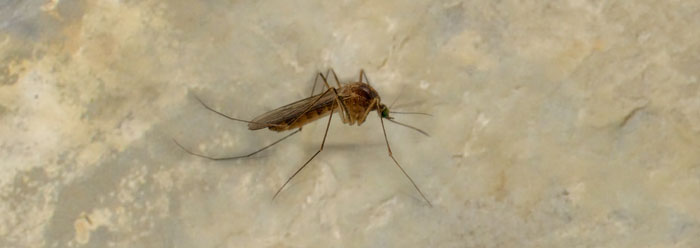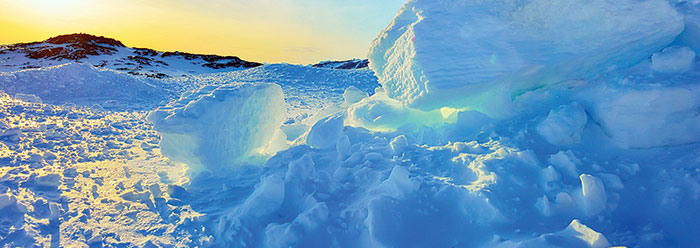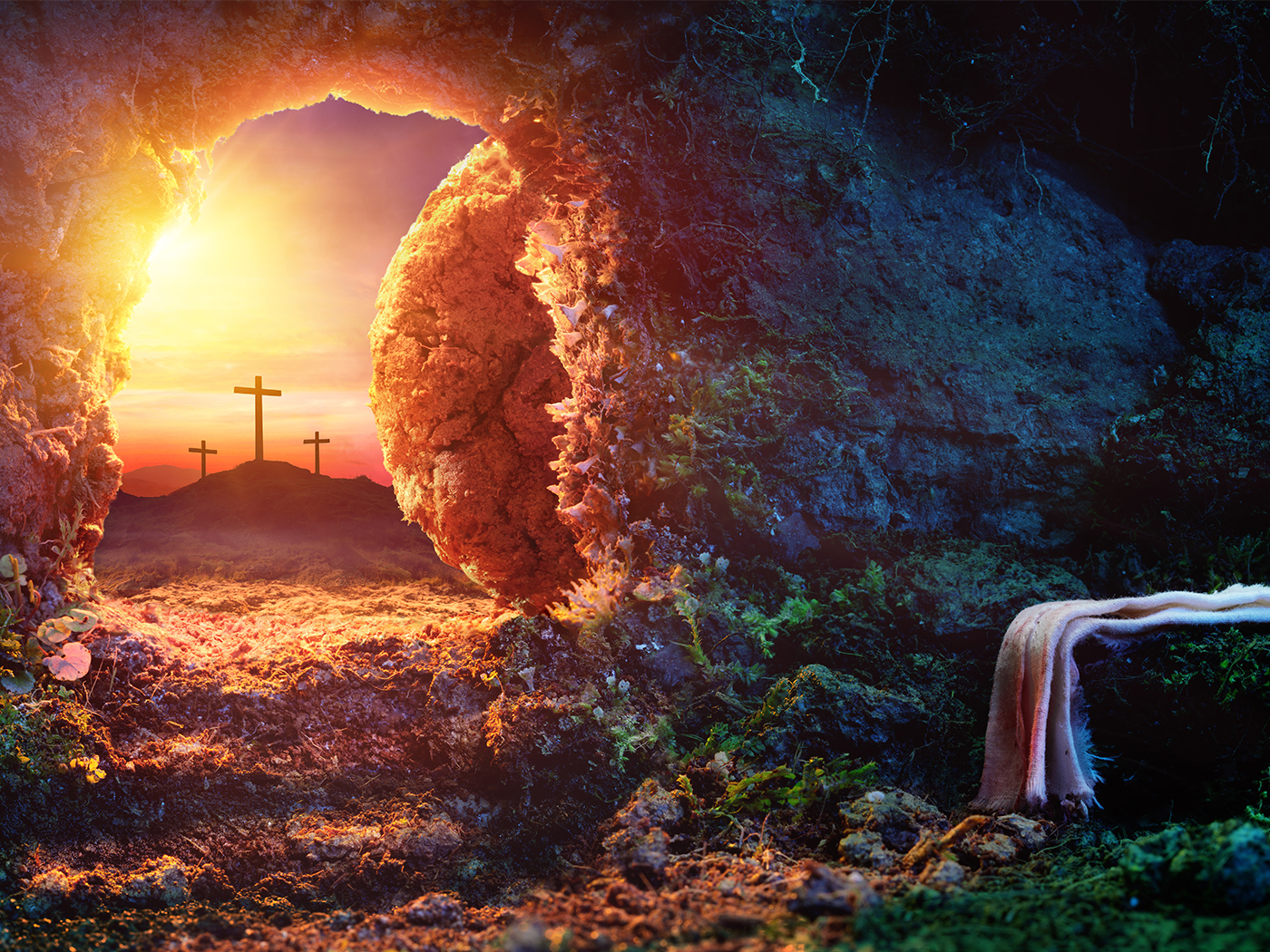Researchers recently examined a spectacular mosquito fossil from the Kishenehn Formation, finding fresh blood—remnants of its last meal—still stored in its abdomen. They wrote, "The data reported herein provide incontrovertible documentation of the presence of heme- and arguably hemoglobin-derived porphyrin in a 46-million-year-old compression fossil."1 How did they obtain this age for the fossil, and are their methods and conclusions reliable?
An earlier Creation Science Update news article confirmed the fossil's genuine blood remnants. It also introduced the biochemical decay rate experiments that give compelling reasons for excluding hemoglobin from materials that could possibly last for even one million years.2
Publishing in Proceedings of the National Academy of Sciences (PNAS), the authors of the mosquito fossil report did not independently test the fossil's age but cited a previously published age given to the Kishenehn Formation.
The cited publication listed two "age" results for the relevant layers within the Kishenehn: 46.2+0.4 and 43.5+4.9 million years.3 Why the PNAS authors chose 46 million years, an age based on radioisotope dating involving argon decay, over other dates ranging within the error span (38.6 to 46.6 million years) was not explained.
Argon-argon dating begins by measuring relative amounts of argon isotopes in an igneous rock sample. Though the Kishenehn is largely sedimentary, not igneous, it contains some igneous material that holds argon. Researchers generated age estimates, assuming 1) that no argon had entered or exited the material after a volcano deposited it and 2) that all of the argon was only one of the two possible isotopes when it was initially deposited.
However, independent studies have debunked the second assumption. For example, one geologist compiled 23 examples of rocks of known ages and recorded when scientists actually watched them form. The results? The rocks were "producing excessively old K-Ar 'ages'" when tested.4 In 23 of 23 cases, these radioisotope "ages" rose orders of magnitude above the rock's actual ages. The culprit? Contrary to assumption, extra argon had entered the hardening volcanic rocks from sources other than radioisotope decay, greatly skewing the rock's apparent isotope ages.
So, absolute ages obtained from argon-related dating techniques should not be trusted. And they give different results than a separate uranium-based radioisotope "age" of only 33.2+1.5 million years that was found for the same region within the Kishenehn.5 Is the formation's age 46 or 33 million, some figure in between, or none of these?
To narrow down the answer, secular scientists typically correlate the rock layer's fossils to a geologic chart with numbered ages printed alongside fossil descriptions.
For example, one paper reported, "It [the Kishenehn Formation] contains a fauna of nonmarine mollusks and mammals, the latter permitting an age assignment to the Early Oligocene or Late Eocene"—ages that fall within an assumed 28- to 38-million-year range.6
In another technical report, petroleum geologist Patrick Monahan wrote, "The Kishenehn Formation has a diverse fauna and flora that suggests a range of ages between late Eocene and early Miocene. However, a fission track age of 33.2+1.5Ma in the lower member in the Kishenehn Basin, and a K/Ar date of 29.9+5.3Ma in similar strata in a nearby basin indicate that the lower part of the Kishenehn is early to middle Oligocene."7
Is the formation from Eocene, Miocene, Oligocene, or none of these?
The idea that rock layers represented eras, like those named Eocene and Oligocene, actually surfaced hundreds of years ago when European naturalists decided different kinds of fossils are found in different rock layers because those creatures lived and died in separate ancient times. It became established dogma.
But other models might actually fare better. For example, what if each rock layer represents animals and plants from a particular ecosystem that was inundated and deposited by a tsunami-like wave, resulting in strata that show unique ecosystems, not separate times?
In sum, the study authors dated the bloody mosquito fossil as 46 million years old based on the age other researchers gave the rocks in the Kishenehn Formation. The age of the Kishenehn came from matching its fossils with those listed and dated on the geologic chart. Radioisotope ages were then hand-picked to match the fossil-related age range from the chart. This way, a "separate" technique added a rubber-stamped appearance of independent confirmation. Finally, scientists accepted that those organisms actually lived in the long-ago eras on the geologic chart because, as the teaching has been for generations, evolution requires extended eras of millions of years.
In short, the Kishenehn mosquito study illustrates typical secular dating using complicated circular reasoning and unproven assumptions. It involves deep-time age assignments given to certain fossils on the premise that those fossils were deposited during separate time eras rather than separate areas at nearly the same time.
If the Kishenehn Formation is younger than 46, 43, 33, or 30 million years—if it is in fact only thousands of years old—then that would explain why it still contains abundant biodegradable oil and fresh, red blood protein remnants.
References
- Greenwalt, D. E. et al. Hemoglobin-derived porphyrins preserved in a Middle Eocene blood-engorged mosquito. Proceedings of the National Academy of Sciences. Published online before print October 14, 2013.
- Thomas, B. Bloody Mosquito Fossil Supports Recent Creation. Creation Science Update. Posted on icr.org October 25, 2013, accessed October 28, 2013.
- Ar40/Ar39 ratios from 12 biotite grains yielded the 46.2-million-year age, and fission track analysis of uranium decay from seven zircon crystals showed a 43.5-million-year age. See Constenius, K. N. 1996. Late Paleogene extensional collapse of the Cordilleran foreland fold and thrust belt. Geological Society of America Bulletin. 108 (1): 20-39.
- Snelling, A. A. 1999. "Excess Argon": The "Archilles' Heel" of Potassium-Argon and Argon-Argon "Dating" of Volcanic Rocks. Acts & Facts. 28 (1).
- 1989. Constenius, K. 1996. Late Paleogene extensional collapse of the Cordilleran foreland fold and thrust belt. Geological Society of America Bulletin. 108 (1): 20-39.
- Russell, L. S. 1964. Kishenehn Formation. Bulletin of Canadian Petroleum Geology. Special Guide Book Issue: Flathead Valley. 12 (2S): 536-543.
- Monahan, P. A. 2000. The Geology and Oil and Gas Potential of the Flathead Area, Southeastern British Columbia. Petroleum Geology Special Paper 2000-2. Brentwood Bay, British Columbia: Monahan Petroleum Consulting.
* Mr. Thomas is Science Writer at the Institute for Creation Research.
Article posted on November 20, 2013.























